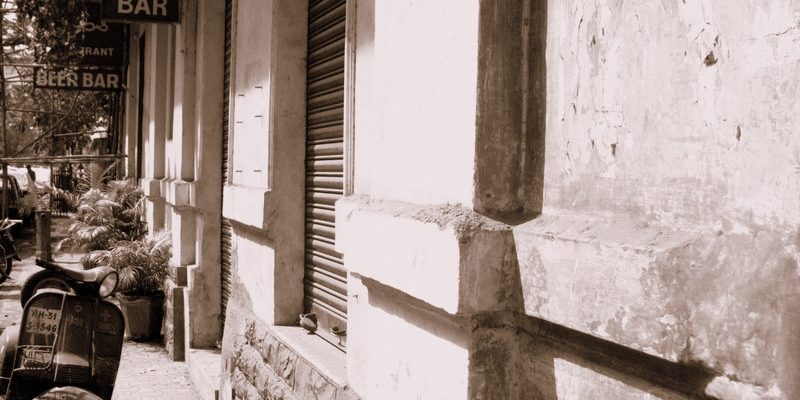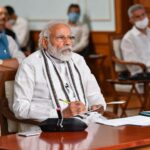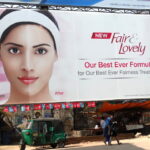At Famous Studios in Tardeo, Avtar Kaul was editing his film 27 Down, next door to us editing Rajnigandha there. In his manic pace, sometimes Avtar would even be sleeping in the editing room itself.
“Avtar, why the bloody hell are you working at this psychotic pace. Take it easy man, because you have no release date to meet. Abhi tak toh hamari filmen koi nahi kharid raha ha. Shayad dabbey mein hi reh jayegi dost?
“Look, Suresh, I want to enter it in the National Awards this year. All the Dadas’ hats are in the ring. I want to throw my little topi in too. I have to meet that deadline, Buddy. You won’t understand….” he said, his voice trailing off.
None of us, including him, could imagine in our wildest imagination that on the eve of his film getting the National Award for the Best Hindi Film, he would tragically drown in the monsoon seas in Walkeshwar, trying to save a friend who had accidentally fallen off the parapet wall of the property where he had a paying guest accommodation.
We were all in our early 30s then, except Basuda who was 42 years old. Our worship mantra was: “Surya soye aur daaru jaage.” At sunset, in groups of four, we would pile into taxis and head for our place of worship and liberation; our favourite “aunty’s” adda under the swaying palms of a sleepy palms fringed Juhu, or the Koli village in Khar, or an under-construction building in Bandra, whose ground floor turned into a speakeasy at night. In fact, we explored all addas from behind the Taj Mahal Hotel to Sion, where next door, a Sikh rehriwala fried the most scrumptious fish in the universe. And you would tip the Bihari mundoo, of the way beyond Michelin Stars Chef, two one rupee coins for bringing it to you to enjoy with your tharra, and his face and eyes would light up like a jugnu in pitch dark on a summer night.
Those were the glorious days of Prohibition, when booze was available everywhere. Even your lift operator knew an “aunty” in the slum nearby, whose kholi sold it 24×7, when you ran out at 2 am, but were still partying.
Bandra was then still a leafy “nearly in the boondocks” suburb, when habitable Bombay ended at Mahim Church. Beyond the Causeway, except for Juhu, where the rich had their “beach shacks”, was dehat –rural Bharat.

St Michael’s Church in Mahim, Mumbai. Photo: Anuradha Sengupta CC BY 2.0
Every taxi driver in Bombay knew the famous aunty in Bandra who lived on the second floor of the building. After the adda served the last drinks but you still wanted another quarter to help you put down dinner at the food carts on Linking Road, the taxi took you below Aunty’s second floor flat. A basket would slither down from the flat in which you put the money for the brand and quantity of the bottle you wanted, and the basket would fly towards the stars, and would descend again like Pushpak Vahaan with the nectar.
If one of our fellow tipplers got too sizzled, you requested aunty to call a cab, who made the cabbie count the money in his pocket (which was just enough for the fare) and sternly told him: “You will leave him at this address, take the cab fare from his pocket, help him to his door, ring the door bell and wait till someone opens it and takes his charge from you. Kya? Samjha??” And we never had an iota of doubt that our buddy would be safely home and puking in his own toilet bowl.
Also Read: Basu Chatterjee, the Real Stealer of Hearts, Remembered by the Boy Next Door
The Bombay Police was reputed to be one of the best in the world at that time. It operated on the system of “it takes a thief to catch a thief.” Of course, the police took their hafta to turn a blind eye to organised crime but also demanded that sharif log be neither, harassed, cheated or physically harmed. One could send a teenaged girl or a drunken friend in a cab at 2 am and could be sure they would reach their destination safe and unharmed. Bombay was the safest city in the world.
Other than bootlegging, the other major organised crimes were smuggling and Ratan Khatri’s matka. From the Elysian Fields of Malabar Hill to the slums of Dharavi, everyone had their very own bootlegger, smuggler man and matka bookie.
Everyone, I mean literally everyone, from the society housewife to the ever-smiling toothless beggar outside your building played matka, which could be played for as little one rupee in the slums to several lakhs in the city’s satta bazaar. When the numbers were picked out at 8pm, everyone wherever they were, would start asking everyone else: “Kya number inkle?” The cabbie would ask you in the cab or you him, the lift man would too, while you were lifting to your flat, and the beggars while you were flagging down a cab or waiting for a bus. Ratan Khatri’s was the True and Revered “Once and Future King” of the Nights of Bombay. A man of sterling integrity who never had a single charge of unfairness or cheating till the Emergency shut down his operations and jailed him.
Haji Mastaan was the Smuggler King, larger than life and more romanticised by the aam aadmi than a Mills and Boons novel. Not only were smuggled goods available everywhere but everyone – in high rises, shops, film and recording studios, clubs and addas – had their own personal Smuggler Man. They were not criminals but normal, polite and neatly dressed men, Hindu and Muslim, trying to make a living by catering to a market of respectful citizens. We were in Nehruvian Socialism and flat broke to be able to import anything at all.
Our local industrialists got their license-permit-quotas by bribing both the Neta and the Babu. They manufactured razor blades that nicked off a little flesh along with the hair on your chin, lipstick that melted in sun making the mouths they adorned like Kali’s after a blood feast, wooden pencils whose lead snapped after every half page of writing, erasers that adorned the page, after use, with black streaks like pre-monsoon skies, fountain pens which would flow with the same irregularity as the city’s water supply.
It was just law-abiding folks who, in addition to the above necessities, wanted cheap tape recorders and cameras, terylene and nylon (the new man-made wonder fabrics) pants and shirt pieces for themselves and gifts to others, toys for the kids whose paint was not toxic, because the “Commanding Heights of The State” had chained our people’s natural animal spirits for entrepreneurship to institutionalize a corrupt, rent seeking and parasitic system.
Bombay was the lodestone to which, like lemmings to the sea, people from the vast cultural, linguistic and racial kaleidoscope landscape of India headed to make their fortunes through luck and pluck with fathomless optimism. Landless peasants came to become labourers in the massive construction boom, or cooks, drivers, watchmen, taxi drivers, bootleggers and smugglers. Small businessmen from the non-descript dusty towns to become seths and buy expensive flats in high rises popping up everywhere. Dhirubhai Ambani, the son of a village school teacher and ex-attendant of a petrol pump in Oman, was just getting to be known with the launch of Vimal Fabrics.
Educated young men and women came to become journalists and copy writers in the advertising industry, and stars in different areas of the film industry – actors, producers, directors, playback singers, musicians.
It was a magical tour crackling with psychedelia, stardust, the music of the spheres seductive with limitless possibilities. It was real because every day someone you knew as a fellow lodger in a seedy guest house or paying guest accommodation in a faraway suburb was moving to his own flat in Bandra, Khar or Juhu, the new prestigious suburbs of upward mobility.
Basuda loved the city with a passion: “Suresh, you tell me, which city in the world will make a boy from Mathura a well-known film director. With my family background, the most that was expected of me, and that my in-laws would consider a good match for their daughter, was to become an upper division government clerk.”

From L to R: Manu Bhandari (writer of Yeh Such Hai on which Rajnigandha is based), Vidya Sinha, Amol, Basu Chatterjee, Dinesh Thakur, Suresh Jindal
As I trudged along with him on the streets or drove in taxis to studios and theatres to meet prospective actors to cast in Rajnigandha, or to Salil Chawdhury’s flat on Pedder Road for a music sitting, or to eat in an Udupi or Irani dhaba, for that’s all we could afford, he would give me anecdotal stories from his rich repertoire, both experienced and heard, of the film industry and of the city’s famous and infamous icons.
At suraj soye daru jaage time, we would hop in a cab with other friends to float to our chosen adda for the night. Basuda would always drink moderately, silently with eyes half-closed, and leave earlier than all others in the gang, who were mostly younger and bachelors, to always eat his dinner at home in Prabhadevi.




